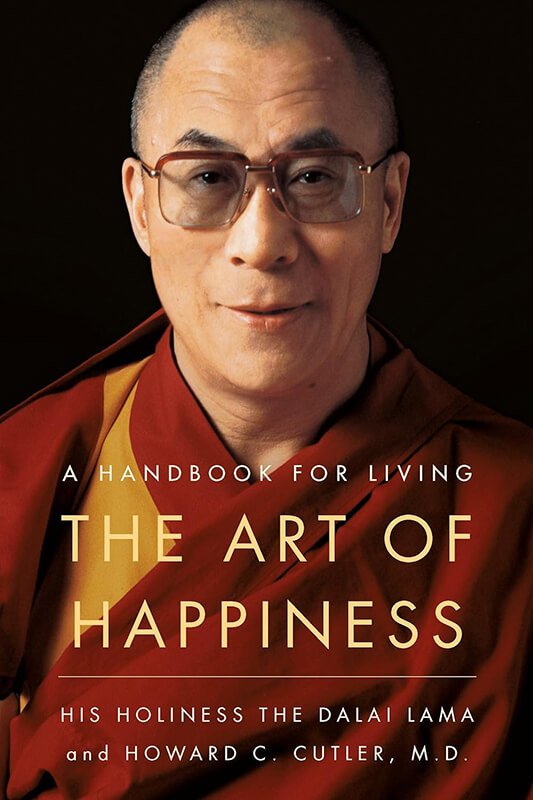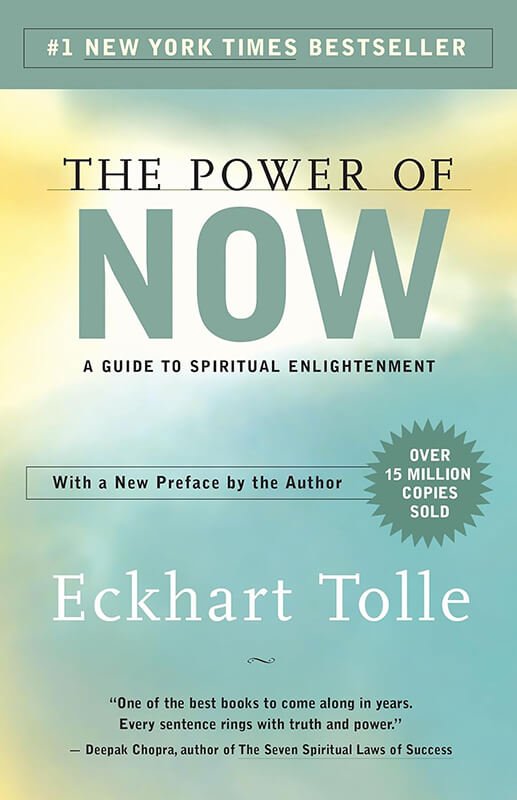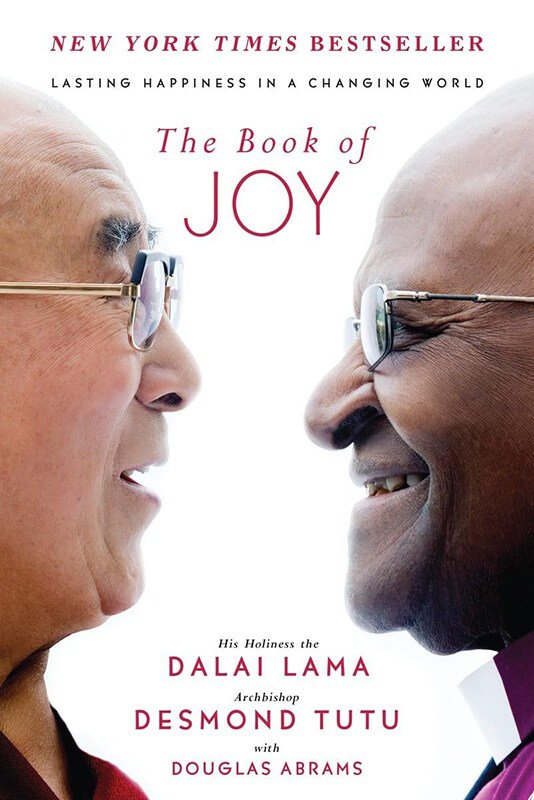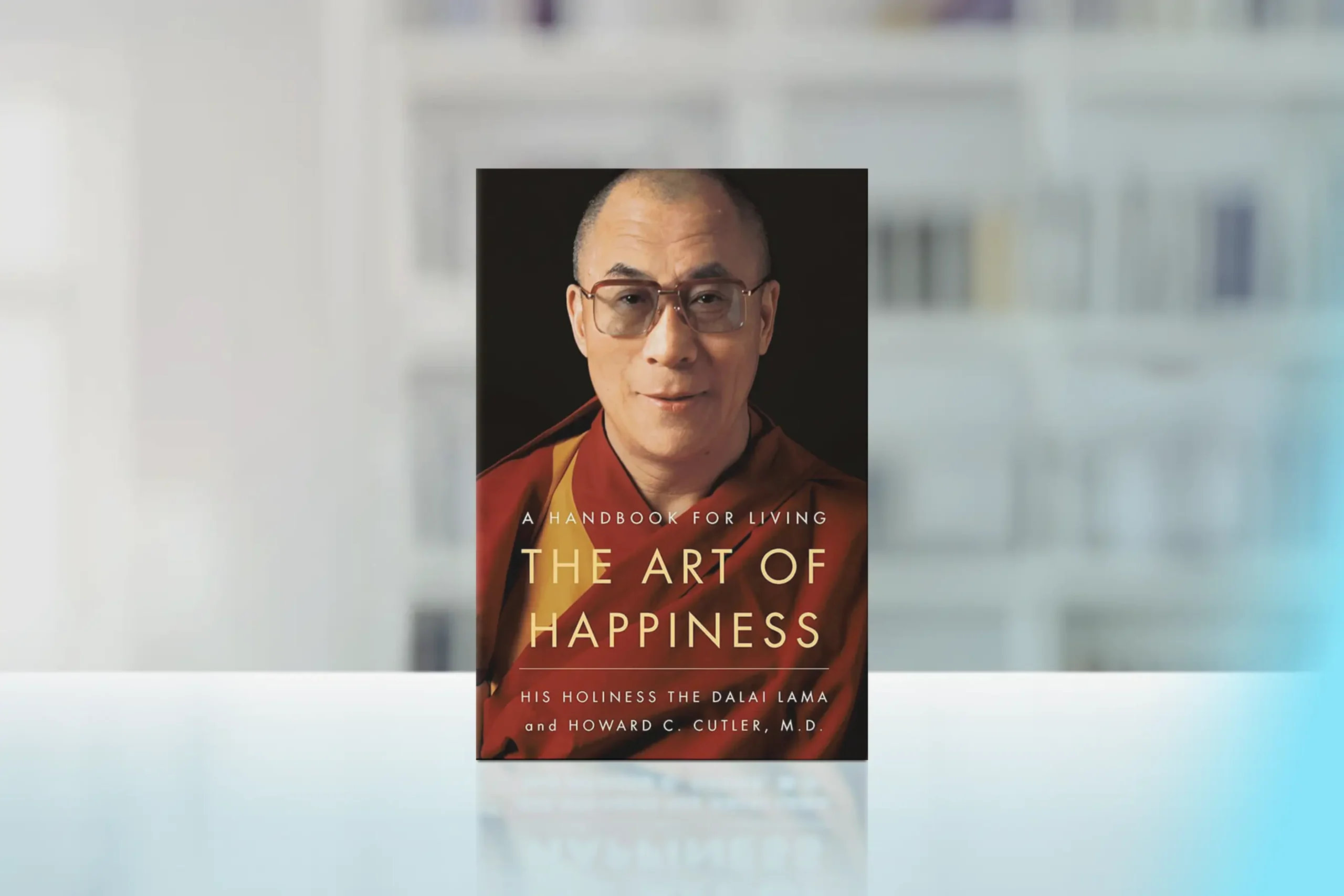“The Art of Happiness: A Handbook for Living,” co-authored by His Holiness the 14th Dalai Lama and psychiatrist Howard C. Cutler, is a profound exploration of the human quest for contentment and well-being.
Published in 1998, this influential work blends Eastern philosophy with Western psychology, offering readers a unique perspective on achieving lasting happiness.
The Dalai Lama’s timeless wisdom, coupled with Cutler’s scientific insights, creates a practical roadmap for cultivating inner peace and joy in our often chaotic world.
Core Concepts
The Dalai Lamai presents several foundational principles to happiness:
- The purpose of life is to seek happiness
- Happiness is determined more by one’s state of mind than by external events
- Training the mind through meditation and conscious effort can lead to greater happiness
- Compassion and connection with others are essential for personal well-being
- Negative emotions and experiences can be transformed into opportunities for growth
These concepts empower readers to take an active role in shaping their mental and emotional well-being, offering practical strategies to cultivate a more positive and fulfilling life experience.
Chapter-by-Chapter Review
Part I: The Purpose of Life
The book begins by exploring the universal pursuit of happiness. The Dalai Lama explains that true happiness doesn’t come from external success but from cultivating inner peace. He presents happiness as a skill we can nurture through training the mind, developing positive habits, and approaching life with greater mindfulness.
Part II: Human Warmth and Compassion
This section highlights the vital role of compassion, empathy, and kindness in building both personal joy and meaningful relationships. The Dalai Lama reminds us that extending compassion to others — and to ourselves — not only strengthens connections but also creates the conditions for deeper, more enduring happiness in daily life.
Part III: Transforming Suffering
Here, the authors address life’s inevitable difficulties. Rather than avoiding pain, the Dalai Lama encourages us to transform suffering into opportunities for growth. By reframing negative experiences, practicing gratitude, and cultivating resilience, we can lessen suffering’s impact and find meaning even in hardship.
Part IV: Overcoming Obstacles
This part turns to the inner challenges that block happiness, such as anger, fear, anxiety, and low self-worth. The Dalai Lama offers practical guidance for replacing these destructive emotions with patience, self-compassion, and calm reflection, allowing us to create more balance and peace of mind.
Part V: Closing Reflections on Living a Spiritual Life
The book closes with reflections on the spiritual dimension of happiness. The Dalai Lama concludes that spirituality, grounded in love and compassion, transcends religion and fosters lasting happiness and connection.
Key Strengths
- Blends Eastern wisdom with Western psychological insights
- Offers practical, applicable advice for everyday life
- Encourages self-reflection and personal growth
- Presents complex philosophical concepts in an accessible manner
- Emphasizes the importance of compassion and human connection
Potential Drawbacks
- Some readers may find the pace slow or repetitive at times
- The dialogue format may not appeal to those seeking a more straightforward self-help approach
- Certain cultural references may feel dated to contemporary readers
Who This Book Is For
“The Art of Happiness” is an invaluable resource for a wide range of readers, particularly:
- Those seeking a more profound understanding of happiness and well-being
- Individuals interested in incorporating mindfulness and meditation into their lives
- Readers curious about Buddhist philosophy and its practical applications
- Anyone struggling with stress, anxiety, or negative emotions
Final Review
“The Art of Happiness” stands as a timeless guide to cultivating inner peace and joy in our lives. The Dalai Lama’s compassionate wisdom, combined with Dr. Cutler’s scientific perspective, offers a holistic approach to well-being that resonates across cultures and belief systems. While some may find the pace deliberate, this thoughtful exploration provides ample opportunity for reflection and integration of the concepts presented.
The book’s strength lies in its practical strategies, especially its focus on compassion in a divided world. Readers are not just presented with abstract philosophy but are given concrete strategies to implement in their daily lives. While practice requires commitment, readers who engage fully gain powerful tools for lasting happiness.
Rating: 4.3/5
A compassionate and insightful guide that empowers readers to cultivate lasting happiness through practical wisdom and self-reflection.

Alternative Books
These alternative books that explore similar themes of happiness and contentment:

“The Power of Now” by Eckhart Tolle
Offers a perspective on living in the present moment and finding inner peace.
Rating: 4.6/5

“The Book of Joy” by Dalai Lama and Desmond Tutu
Explores the nature of true joy and how to cultivate it in our lives.
Rating: 4.8/5

“Mindfulness in Plain English” by Bhante Henepola Gunaratana
Provides a practical guide to meditation and mindfulness practices.
Rating: 4.7/5





